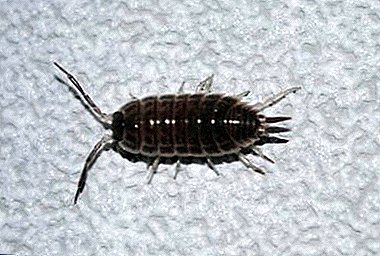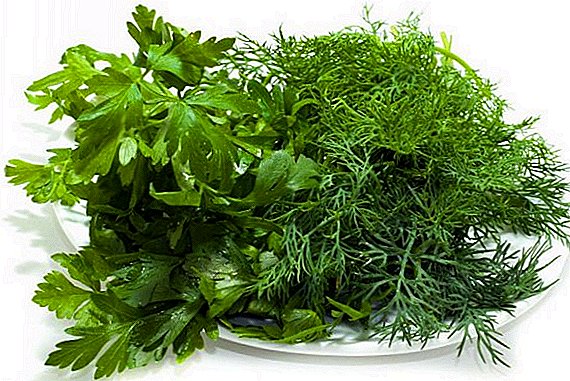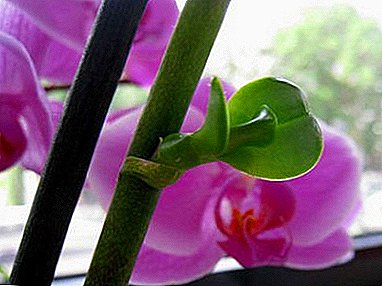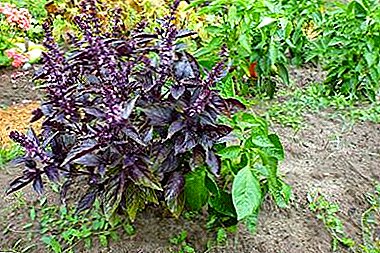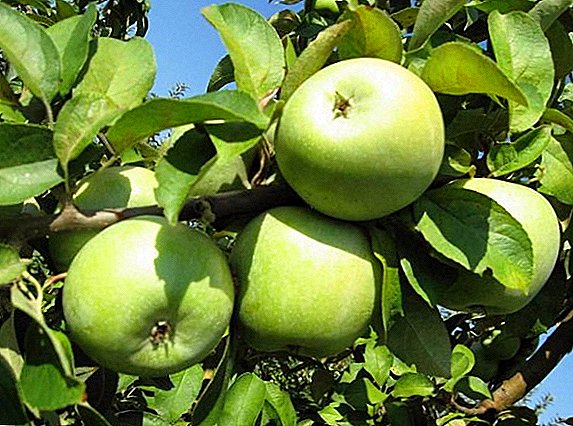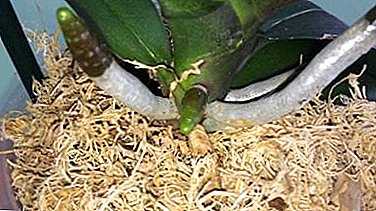
Orchid - a special indoor plant. Her beauty is not only in the delicate beauty of flowers, but also in the unusual formation of roots. Some of them, as expected, located in the bottom of the bowl. Another - comes to the surface. Do not be afraid of such a phenomenon - this is not a disease, but the norm for orchids.
Features of the root system of the flower
The peculiarity of an orchid as a plant is the air root system. In its natural habitat, the flower grows on rocky soil, ravines and even trees. Nutrients for growth and development of the soil is not enough. Thanks to the aerial root system, the orchid takes everything you need from the environment.
Aerial roots are rounded oblong processes, the surface of which consists of a sponge shell - a special cell layer. They are called belamen.
With the help of an unusual shell, an orchid is able to get moisture and nutrients for its growth and development literally from the air. On a hot day, it dries out, preventing excessive moisture loss. Inside the aerial roots, under the membrane, there is a vascular grid - it serves as a store of moisture and delivers it to the leaves and flowers.
The order of providing nutrients and moisture in a home-adapted orchid is different. The entire root system is located under a layer of soil. Getting the roots out does not mean improper care of the plant. It is important how healthy they are.
The root system of an orchid is constantly being formed, old roots die off and new ones grow in their place. If within a couple of months the shoots did not appear on the surface - it is worth changing the order of care for the plant.
Why do the roots go out of the pot?
 In warm countries, in their homeland, the orchid receives nutrients only through the air root system. It grows in places where there is practically no soil. Fastened with branches to trees and large plants, without parasitizing on their neighbors. This form of existence is called epiphytic.
In warm countries, in their homeland, the orchid receives nutrients only through the air root system. It grows in places where there is practically no soil. Fastened with branches to trees and large plants, without parasitizing on their neighbors. This form of existence is called epiphytic.
At home, the plant receives moisture and nutrients from the substrate. Air roots grow, but their number is minimal. They serve as an additional source and storage of moisture. In this case, the growth and development of the orchid is carried out in a combined way.
The appearance of the air root system is an indicator of flower well-being. Any deviation in the water regime, uncomfortable conditions or lack of necessary substances affects the state of the roots. They change their color, become dry, covered with rot. If the shoots are gray-green in color and look painful, the plant is under stress, it is time to take action.
We offer you to watch a video about why orchid roots come out of a pot:
Factors affecting the emergence of new processes
Air roots in homemade orchids are always formed. Several factors affect their excessive appearance:
- Over-watering - the abundance of moisture provokes processes of decay at the roots in the substrate. The plant forms additional shoots, roots, so as not to die.
- Lack of moisture - in this case, the roots of an orchid grow upwards in order to take the lack of nutrients from the environment.
- Heat - the formation of aerial roots characteristic of the winter period. At this time, the air in the room becomes dry due to constantly running batteries. The flower lacks moisture and tries to get it in all possible ways.
- Insufficient lighting - without light, there is no photosynthesis process important for orchids. The roots start to rot. To avoid this, the plant forms and throws processes on the surface to produce additional light.
- Dense layer of soil - Orchid substrate is not recommended to tamp tightly. In crampedness, there is no development of roots, in search of space, they crawl to the surface.
- Substandard or improperly selected substrate - the plant literally does not tolerate it and tries to escape.
- Lack of space - roots climb in all directions in search of a new space for themselves. In this case, it is time to find a pot for a larger flower, and transplant it.
You should not worry if aerial roots suddenly appeared in the orchid pot. This is not a pathology, but a signal from the plant that it is necessary to revise the care and irrigation system.
What to do with it?
 Excessive growth of aerial roots is not dangerous if the orchid visually looks good - the leaves are elastic, the color is rich green, the peduncle comes on schedule, the roots are smooth, without signs of disease and desiccation.
Excessive growth of aerial roots is not dangerous if the orchid visually looks good - the leaves are elastic, the color is rich green, the peduncle comes on schedule, the roots are smooth, without signs of disease and desiccation.
Measures should be taken if the plant feels bad, including due to the large amount of aerial roots. The way out of this situation is transplanting an orchid into a larger container.
The substrate for the flower must be changed once every three years. A good option substrate - moss, charcoal, pine chips in a ratio of 2: 1: 5. When transplanting is not recommended to completely replace the soil, it is worth leaving some of the old. To the plant less painful survived the move.
Step-by-step transplanting instructions
Step-by-step orchid transplanting instructions:
- Remove the plant from the old container, taking care not to damage the roots and processes.
- Carefully separate the old substrate from the roots.
- From dried and diseased roots get rid of with scissors, which must be disinfected, as well as the place of the cut. Otherwise, the plant will fall ill for a long time.
- If pests are found on the roots, it is necessary to soak the orchid for several hours in warm water, and then treat it with an antiparasitic agent.
- For 8 hours the plant dries.
- Put a drainage layer on the bottom of the new container. Place the orchid on the pot in medium depth. Gently holding the roots, pour in a new substrate.
Important! Soil can not be tamped down much, as well as to leave excessive voids. The trunk of an orchid should hold tight, not hanging out.
Orchid transplanting is recommended after flowering. If this is done during the period when buds are born or when they bloom, the plant will have a difficult time moving to a new place.
Plant Care
Excessive growth of aerial roots harms plant development. Additional trouble can add and improper care. Often the shoots that grow outward begin to rot due to frequent watering or, on the contrary, to dry due to lack of water and heat, and the host does not know what to do with it. Option one is to get rid of diseased roots.
You will need scissors that you should sanitize before pruning. It is not always possible to distinguish healthy roots from the diseased. Leave the orchid for an hour in warm water. Healthy roots absorb moisture and become a pale green color. Now you can safely get rid of the diseased and old processes, in which the appearance has not changed.
Orchid - a capricious plant with an unusual root system. Aerial roots will not be a problem for plant growth and development. With proper care, an orchid will delight with the delicate colors of its owners for years.



